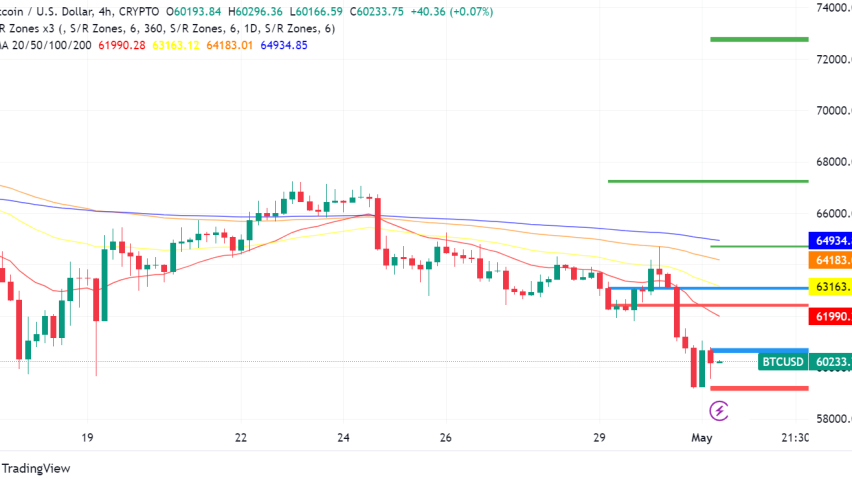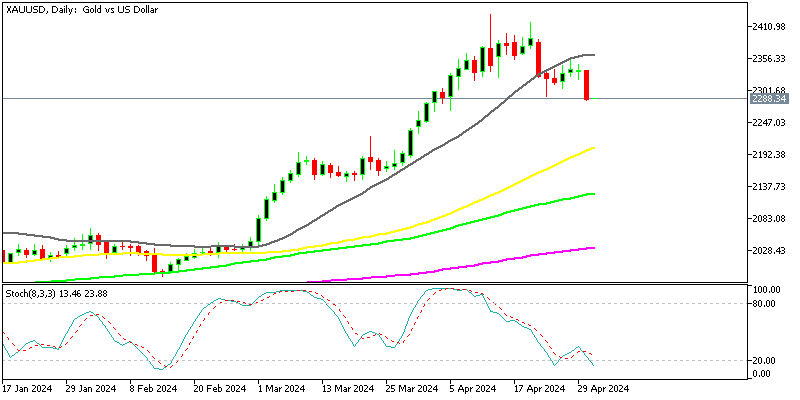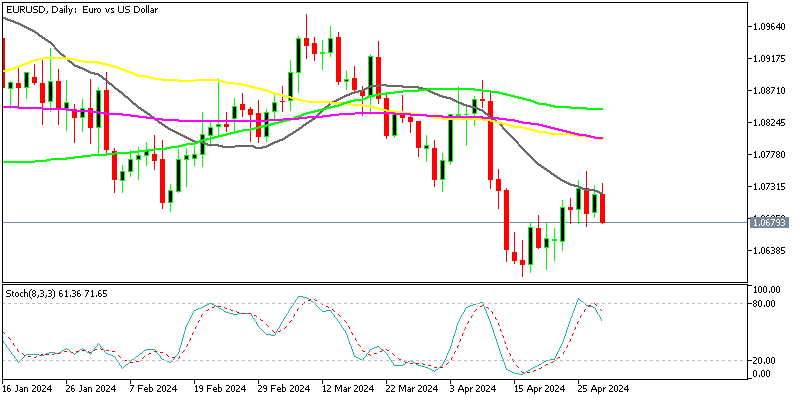Forex Signals Brief April 1: China Starting the Week on the Right Foot
Last week the economic calendar was light, with the US Q4 final GDP report taking up some attention on Thursday, as the revisions were positive, giving some support to the US Dollar. On Friday we had the major event which was the core PCE inflation report and FED’s Powell held a speech afterward.

| Broker | Review | Regulators | Min Deposit | Website | |
|---|---|---|---|---|---|
| 🥇 |  | Read Review | ASIC, FSA, CBI, BVI, FSCA, FRSA, CySEC, ISA, JFSA | USD 100 | Visit Broker >> |
| 🥈 |  | Read Review | FMA, FSA | USD 50 | Visit Broker >> |
| 🥉 |  | Read Review | FSCA, CySEC, DFSA, FSA, CMA | USD 0 | Visit Broker >> |
| 4 |  | Read Review | SFSA, FSCA, CySec* | USD 5 | Visit Broker >> |
| 5 |  | Read Review | FCA, CySEC, FSCA, SCB | USD 100 | Visit Broker >> |
| 6 |  | Read Review | FCA, FINMA, FSA, ASIC | USD 0 | Visit Broker >> |
| 7 |  | Read Review | CySEC, FCA, FSA, FSCA, Labuan FSA | USD 100 | Visit Broker >> |
| 8 |  | Read Review | Not Regulated | 0.001 BTC | Visit Broker >> |
| 9 |  | Read Review | ASIC, CySEC, FSCA, CMA | USD 100 | Visit Broker >> |
| 10 |  | Read Review | CySEC,MISA, FSCA | USD 20 | Visit Broker >> |
The aftermath of the PCE report seemed to have a mixed impact on the US dollar, with some selling observed. This reaction could be attributed to various factors, including relief that the inflation data wasn’t hotter than expected and some disappointment regarding the slightly lower-than-expected core monthly inflation figure. Federal Reserve Chair Jerome Powell’s comments also played a role in market sentiment.
While he acknowledged the PCE report as being in line with expectations and positive to see, he also emphasized the Fed’s desire for more robust inflation reports similar to those seen last year. This suggests that the current level of inflation may not be sufficient to warrant significant policy changes. Interestingly, Powell didn’t highlight the potential for rate cuts this year, indicating a potentially more hawkish stance. However, he also mentioned that if inflation persists longer than expected, the Fed may maintain its current stance for a longer period, without necessarily indicating any intention to hike rates in response.
This Week’s Market Expectations
This week the calendar is average, with US employment figures being the most important forex events, followed by the Eurozone CPI inflation for March.. Over the weekend we had a positive surprise from China, which showed that manufacturing left behind contraction while services improved further.
Monday:
- China Caixin Manufacturing PMI: Provides insight into the health of China’s manufacturing sector.
- US ISM Manufacturing PMI: Measures the activity level of purchasing managers in the manufacturing sector.
- Bank of Canada (BoC) Business Outlook Survey: Provides an overview of business sentiment and expectations in Canada.
Tuesday:
- Reserve Bank of Australia (RBA) Minutes: Offers insights into the RBA’s latest monetary policy meeting discussions.
- Switzerland Retail Sales: Reflects consumer spending trends in Switzerland.
- Switzerland Manufacturing PMI: Indicates the performance of Switzerland’s manufacturing sector.
- German Inflation data: Reports on the inflation rate in Germany.
- US Job Openings: Provides data on job vacancies in the United States.
Wednesday:
- China Caixin Services PMI: Measures the performance of China’s services sector.
- Eurozone CPI and Unemployment Rate: Reports on inflation and unemployment trends in the Eurozone.
- US ADP: Releases private sector employment data in the United States.
- Canada Services PMI: Reflects the performance of Canada’s services sector.
- US ISM Services PMI: Measures the activity level of purchasing managers in the services sector in the United States.
Thursday:
- Switzerland CPI: Reports on the consumer price index in Switzerland.
- Eurozone PPI: Indicates changes in producer prices within the Eurozone.
- US Challenger Job Cuts: Reports on the number of announced layoffs by US employers.
- US Jobless Claims: Provides data on the number of individuals filing for unemployment benefits in the United States.
Friday:
- Eurozone Retail Sales: Reflects consumer spending trends in the Eurozone.
- Canada Jobs data: Reports on employment and unemployment figures in Canada.
- US Non-Farm Payrolls (NFP): Provides data on the number of jobs added or lost in the US economy, excluding the farming industry.
Last week the volatility was relatively low as markets were digesting the data and the central bank decisions from the previous week, apart from Gold which continued to make new highs all week. We opened 13 trading signals, 10 of which closed in profit, with only one closing in loss, giving us a great risk-reward ratio.
Gold Heading for $2,500
The surge in gold prices observed on Wednesday, with a $40 increase to $2233, represents a significant milestone as it marks the first daily close above the $2200 level. From a technical perspective, this rally is noteworthy due to the formation of an upside-down head and shoulders pattern, a bullish reversal pattern commonly observed in financial markets. The upside-down head and shoulders pattern typically indicates a shift from bearish to bullish sentiment, with the target price projection set at $2500. Given the recent strong uptrend in gold prices and the breakout above the key $2200 level, this target price doesn’t seem too far-fetched.
XAU/USD – 60 minute chart
NZD/USD Closes the Week Below 0.60
It seems like the NZD/USD pair has been facing bearish pressure, with moving averages exerting downward pressure on highs since September 2020. The pair recently broke below the key psychological level of 0.60, but unlike the Australian Dollar, it closed the week below this level. The stochastic indicator is showing oversold conditions, suggesting a potential bullish reversal. However, the actual reversal will depend on various factors, including the performance of the US economy and the Federal Reserve’s monetary policy decisions.
NZD/USD – Weekly Chart
Cryptocurrency Update
The 20 Daily SMA Turns into Support for Bitcoin
The BITCOIN price has once again surpassed $70,000 today, continuing its remarkable rally since October. However, despite this upward trend, there are challenges in maintaining the price above $70,000, suggesting the emergence of a near-term peak. This difficulty in sustaining higher levels could indicate a potential short-term reversal. Moreover, analysis of the daily chart suggests the formation of a bearish reversal pattern, adding to the indication of an impending decline. This pattern implies that the bullish momentum driving Bitcoin’s price higher may be waning, potentially leading to a corrective move downward. If this bearish pattern materializes and the price of Bitcoin begins to decline, traders may find opportunities to profit from short-term downward movements in its price.
BTC/USD – Daily chart
Ethereum Overcomes the 20 SMA
The recent price action of Ethereum (ETH) has been characterized by significant movements around key technical levels, particularly the 50-period Simple Moving Average (SMA) on the daily chart. Despite experiencing a bearish reversal after surpassing the important milestone of $4,000, Ethereum managed to find strong support at the 50-period SMA, which is highlighted in yellow on the chart. This indicates the significance of this technical level in influencing price movements. The bounce from the 50-period SMA attracted buyers, leading to a subsequent price increase. However, Ethereum has encountered resistance around the 20-period SMA (grey), which has prevented further upward progress.
ETH/USD – Daily chart
🏆 7 Best Forex Brokers
| Broker | Website | |
|---|---|---|
| 🥇 |  | Visit Broker >> |
| 🥈 |  | Visit Broker >> |
| 🥉 |  | Visit Broker >> |
| 4 |  | Visit Broker >> |
| 5 |  | Visit Broker >> |
| 6 |  | Visit Broker >> |
| 7 |  | Visit Broker >> |












